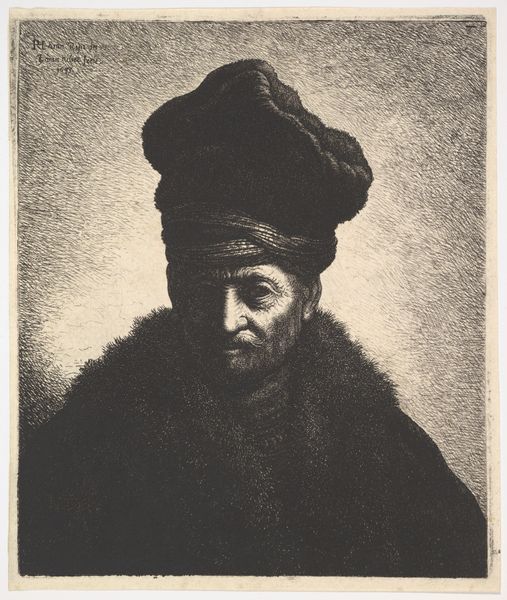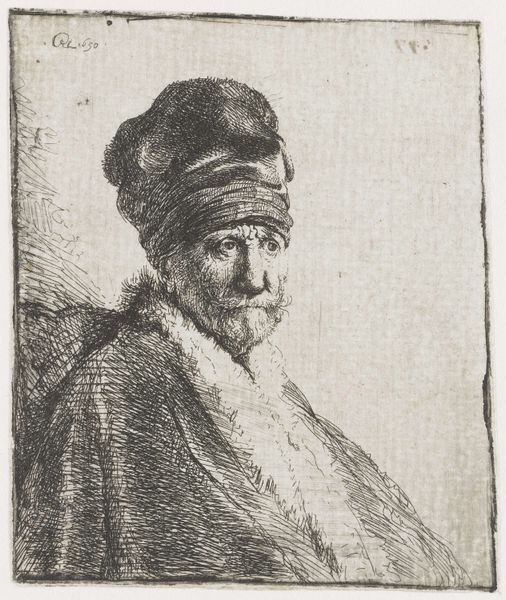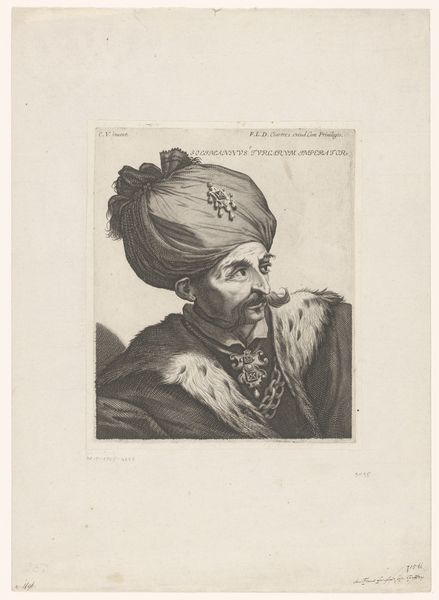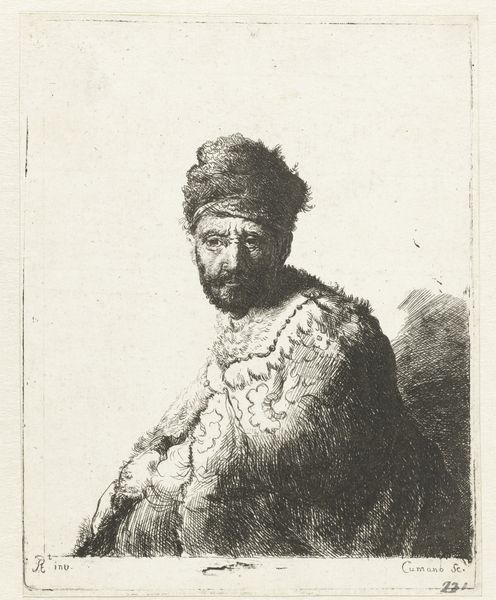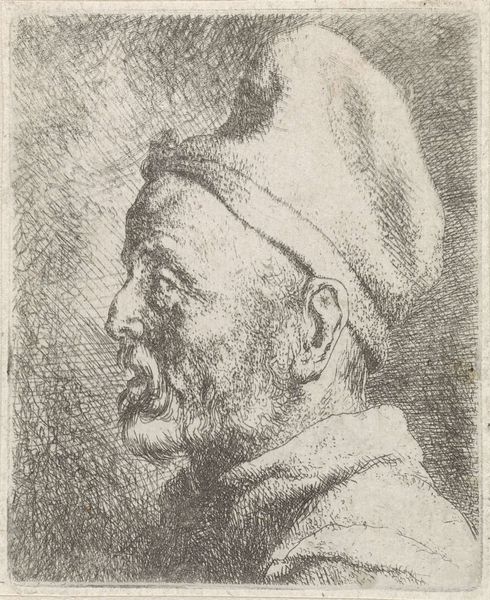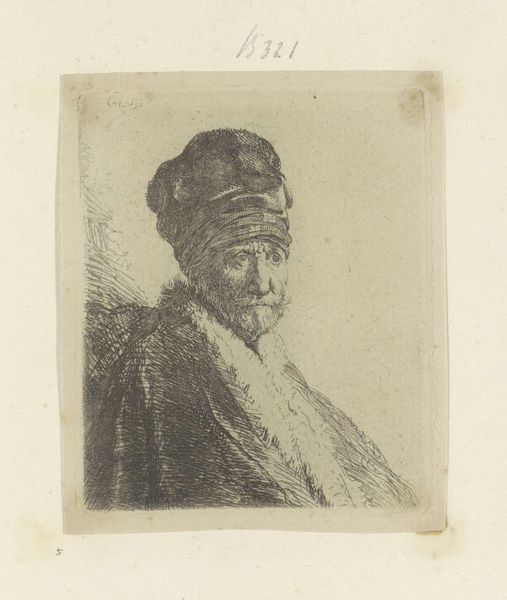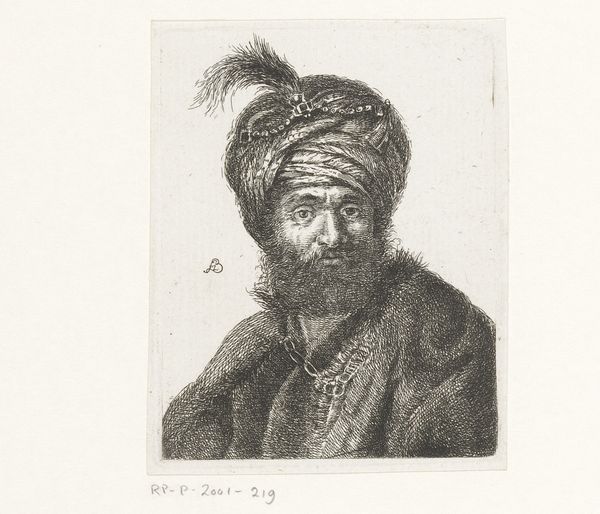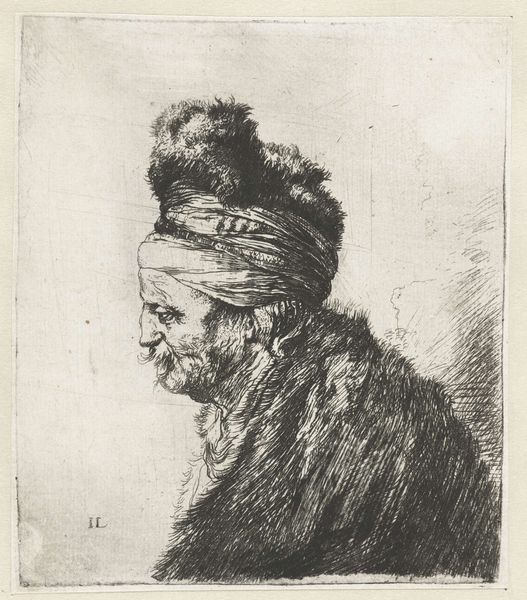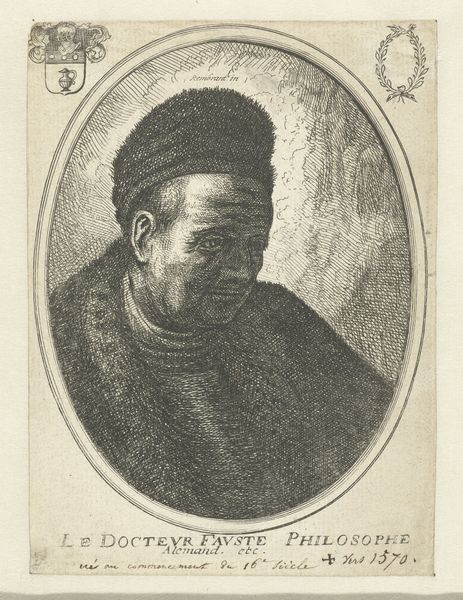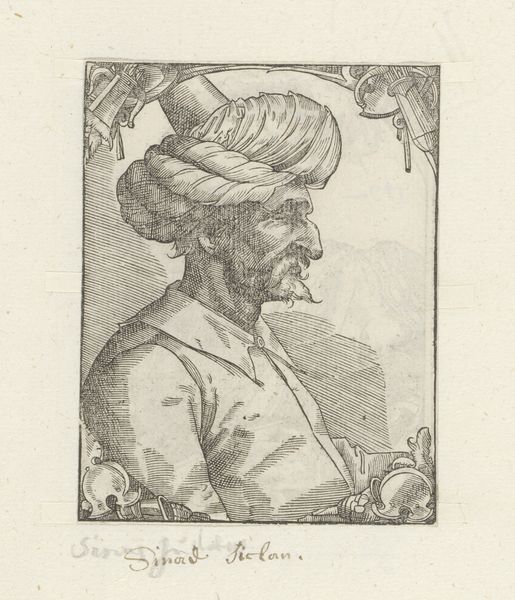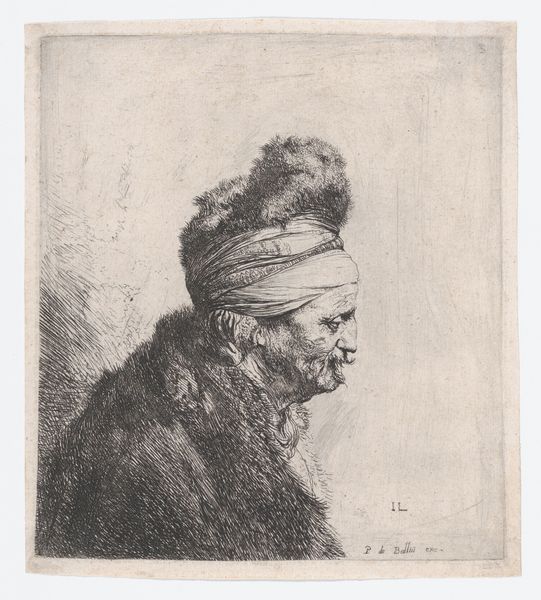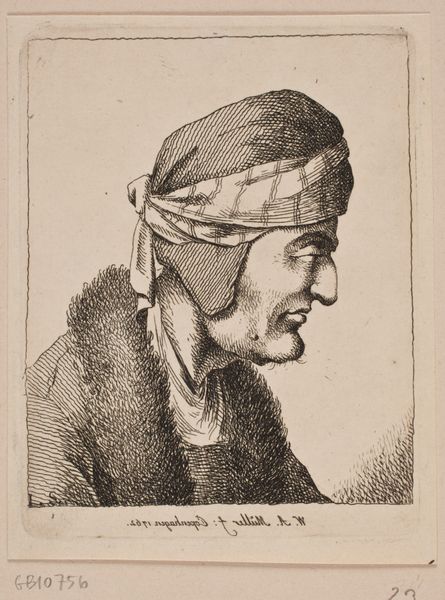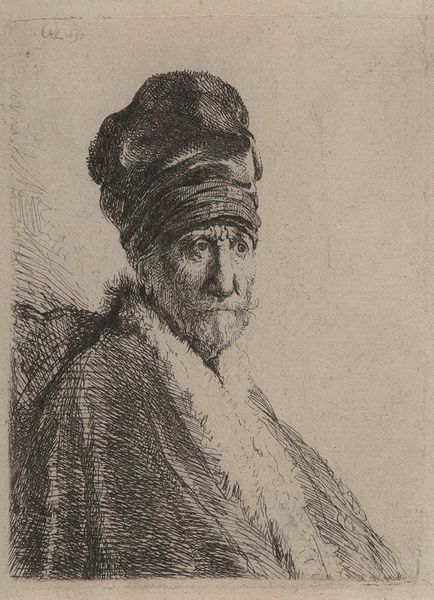
print, engraving
#
portrait
#
baroque
#
dutch-golden-age
# print
#
old engraving style
#
caricature
#
portrait drawing
#
history-painting
#
engraving
Dimensions: height 214 mm, width 180 mm
Copyright: Rijks Museum: Open Domain
Curator: Looking at this engraving, dating back to the Dutch Golden Age, around 1615-1647, what jumps out at you? It's called "Portret van Philo van Alexandrië," and it resides here at the Rijksmuseum. Editor: Well, right away, the texture is phenomenal. The way the artist suggests fur, the layering of fabric… it’s so tactile! The face itself is incredibly characterful too; there’s a sense of world-weariness there, don’t you think? Curator: Absolutely. It’s attributed to Jerôme David, though you'll notice in the top left that 'Rt van Ryn' is indicated suggesting this work references Rembrandt somehow, or copies it directly. The "Philo van Alexandrië" in the title is interesting, right? Philo, the Hellenistic Jewish philosopher who sought to harmonize Greek philosophy with Jewish thought! David or Ryn wasn’t necessarily aiming for historical accuracy in portraying him, you know. It’s more of a character study. Editor: A character ripe with a long life behind him! He looks so wise, and though he’s staring right at us, I can’t shake the feeling that he’s deep inside his own head thinking and working out some ideas. The clothing looks heavy, but I think this weight contrasts with the lightness of his eyes. The texture in this work reminds me a bit of chiaroscuro painting – all done with line. Curator: I find it fascinating how the print medium allows for widespread circulation of images and ideas. It made philosophers and historical figures much more accessible to a broader public. Prints like this were often collected in albums or displayed as conversation pieces in homes, demonstrating the owner's intellectual inclinations. Editor: He feels very accessible, as if I might just ask him about his perspective. Do you think the popularity of prints helped shape perceptions and even reinforce certain stereotypes of different historical figures? Curator: Undeniably! Images, particularly portraits like this, were powerful tools in shaping public opinion. How historical figures were visualized had significant implications on their lasting reputations. Here in this print, Philo looks almost like a biblical patriarch. Editor: And, maybe that's the genius here—to collapse time, religion, and history into this one striking image. It gives Philo—as he may have wanted to see himself—the proper gravitas. I am changed having considered that he lived long before modern times, when media was more exclusive. Thank you for that perspective!
Comments
No comments
Be the first to comment and join the conversation on the ultimate creative platform.
